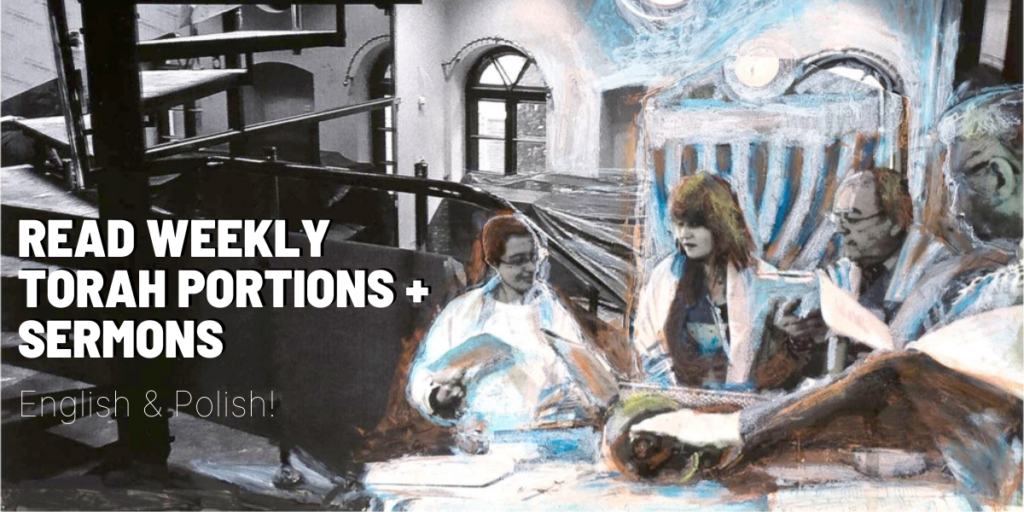30th January, 2015/10 Shvat 5775
Shirat HaYam –‘Song of the Sea’ or ‘Song on the Sea’ is one of the most beautiful and one of the most ancient pieces of Hebrew Poetry. I recall Prof. Moshe Greenberg saying that the deliverance of our ancestors from the mighty Egyptian Empire was such an incredible event, that they had to describe it as a super-natural phenomenon, in which the water parted and created two walls on both sides of the dried up trail… I fully agree with him but some of the more Orthodox students did not like this explanation…Did all Israelites join in the singing of Shirat Hayam? Apparently not: Moses and “the sons of Israel” are singing in the beginning of chapter 15 but by the end of the same chapter Miriam takes the timbrel and all women “go out” after her singing with timbrels and dancing. Our Sages conclude in the Mechilta: “Moses was singing to the men and they repeated after him and Miriam led the women in singing.” Was this ‘division of tasks’ necessary? Was Moses already familiar with the Rabbinic warning that “Kol baIsha ‘Erva” i.e. that the female voice arouses the sexual drive of a man, and therefore men should avoid listening to women’s singing? I strongly believe that this very concept is very late and that we have numerous Biblical precedents of Israelite men listening to women’s singing, especially following a victory over a mighty enemy…Who was the poet who composed ‘Shirat haYam’ – Moses or Miriam? I am convinced it was Miriam. This is, of course, not the common view, since Moses is mentioned before these words of poetry and Miriam after the end.
Whoever should own the ‘copyright’ for Shirat haYam we should notice one difference in its text between the version of Moses and the version of Miriam: Moses began with the words “Ashira lAdonai” =I will sing to Adonai [Ex.15:1] and Miriam began with the words “Shiru lAdonai” =Sing (i.e. let all of us/you sing) to Adonai. [Ex.15:21]
This may seem as a trivial difference… It is not trivial! It hints that Moses was a CANTOR (Chazan) and Miriam was a SHLICHAT TZIBBUR. Moses wanted to sing “solo” and expected the men to repeat what they heard…, Miriam wanted the women to join her in singing, to sing along with her.
There is no dichotomic difference between the two types. Even Shliach-Tzibbur who expects the congregation to sing along, must first sing a new melody ‘solo’ in order for all others to listen and learn. Moreover, in almost all liturgical traditions there are words or sentences that the prayer-leader sings by himself/herself, and the congregation replies or repeats…
In modern synagogues one can often tell by the internal architecture whether the sanctuary was designed so that public prayers are led by either a Shliach/Shlichat Tzibbur (literally: messenger of the community) or by a “Chazan/ Chazanit” (cantor). When there is a high Bimah (stage) and the congregation is seated in frontal lines facing the Bimah, it is likely that a ‘Chazan’ will perform a concert of Jewish Liturgy and the worshippers will sit quietly and listen, as people are accustomed to do in concert-halls… If, however, the congregation is seated around and/or on the same level as the location designated for the prayer leader, it is likely that the congregation prefers to sing along with the Shliach/Shlichat tzibbur… Which model is preferable? One should ask neither the rabbi nor the cantor but rather the congregation…
Rabbi Gil Nativ
30 stycznia 2015/10 szwat 5775
BeSzalach
Szirat haJam – „Pieśń Morza” czy też „Pieśń na Morzu” – to jeden z najpiękniejszych oraz najstarszych utworów poezji hebrajskiej. Pamiętam, jak profesor Mosze Greenberg mówił, że wybawienie naszych przodków spod władzy potężnego imperium egipskiego było tak niezwykłym wydarzeniem, że musieli opisać je jako nadprzyrodzone zjawisko, podczas którego wody rozstąpiły się, tworząc dwie „ściany” po dwóch stronach suchej ścieżki. W pełni zgadzam się z tym wyjaśnieniem, choć niektórym bardziej ortodoksyjnym studentom nie przypadło ono specjalnie do gustu…Czy wszyscy Izraelici przyłączyli się do śpiewania Szirat Hajam? Najwyraźniej nie: na początku rozdziału 15 Mojżesz oraz „synowie Izraela” śpiewają, pod koniec tego samego rozdziału Miriam bierze zaś bębenek i wszystkie kobiety „wychodzą” za nią, śpiewając z bębenkami i tańcząc.W Mechilcie nasi mędrcy podsumowują to następująco: „Mojżesz śpiewał do mężczyzn, a oni powtarzali za nim, Miriam prowadziła natomiast kobiety w śpiewie”. Czy ten „podział zadań” był konieczny? Czy Mojżesz znał już wówczas rabiniczne ostrzeżenie: „Kol balsza „Erwa”, głoszące, iż kobiecy głos wzbudza pożądanie seksualne u mężczyzn, powinni oni zatem unikać słuchania kobiecego śpiewu? Jestem głęboko przekonany, że koncepcja ta powstała w bardzo późnym okresie; w Biblii opisano liczne przypadki, gdy mężczyźni z ludu Izraela słuchali kobiecego śpiewu, szczególnie po zwycięstwie nad potężnym wrogiem…
Kto ułożył poetycki utwór „Szirat haJam” – Mojżesz czy Miriam? Jestem przekonany, że była to Miriam. Nie jest to oczywiście powszechnie wyznawany pogląd, szczególnie, że przed tymi poetyckimi słowami wspomina się właśnie o Mojżeszu, wzmianka o Miriam pojawia się zaś dopiero po wierszu.
Niezależnie od tego, komu przysługują „prawa autorskie” do Szirat haJam, powinniśmy zwrócić uwagę na różnicę w słowach pomiędzy wersją Mojżesza a wersją Miriam: Mojżesz rozpoczął od słów „Aszira lAdonaj” – „będę śpiewał Adonaj” (Wj 15, 1), Miriam zaczęła zaś od zwrotu „Sziru lAdonaj” – „śpiewajmy (tzn. my wszyscy/wy śpiewajcie) Adonaj” (Wj 15, 21).
Różnica ta może wydawać się nieistotna, ale w rzeczywistości wcale tak nie jest! Wskazuje ona, że Mojżesz był KANTOREM (chazanem), a Miriam była zaś SZLICHAT CIBUR. Mojżesz chciał śpiewać „solo” i oczekiwał, że mężczyźni powtórzą jedynie usłyszane słowa. Miriam chciała natomiast, aby kobiety dołączyły do jej śpiewu i zaśpiewały wspólnie z nią.
Pomiędzy tymi dwoma podejściami nie zachodzi dychotomia. Nawet szlijach cibur oczekujący, że kongregacja przyłączy się do jego śpiewu, musi najpierw zaśpiewać nową melodię „solo”, aby wszyscy inni mogli jej wysłuchać i nauczyć się jej. Co więcej, w prawie wszystkich tradycjach liturgicznych istnieją słowa lub zdania, które prowadzący modlitwę śpiewa sam/sama, a kongregacja jedynie odpowiada bądź powtarza je…
We współczesnych synagogach można często domyślić się na podstawie wewnętrznej architektury, czy sanktuarium to zostało zaprojektowane tak, aby publiczne modlitwy prowadzone były przez szlijach/szlichat cibur (dosłownie: „wysłannik zgromadzenia”), czy też przez chazana/chazanit (kantora/kę). Tam, gdzie wybudowano wysoką bimę (podest), a kongregacja siedzi w rzędach zwróconych ku bimie, „chazan” najprawdopodobniej zaprezentuje koncert liturgii żydowskiej, modlący się będą zaś słuchać w milczeniu, tak, jak ludzie mają w zwyczaju czynić w salach koncertowych… Jeśli kongregacja siedzi natomiast wokół i/lub na tym samym poziomie, na którym znajduje się miejsce przeznaczone dla prowadzącego modlitwę, bardzo prawdopodobne jest, że kongregacja ta woli śpiewać wspólnie ze szlijach/szlichat cibur… Która z tych opcji jest lepsza? Nie należy pytać o to ani rabina, ani kantora, ale raczej samą kongregację…



















Leave a Reply